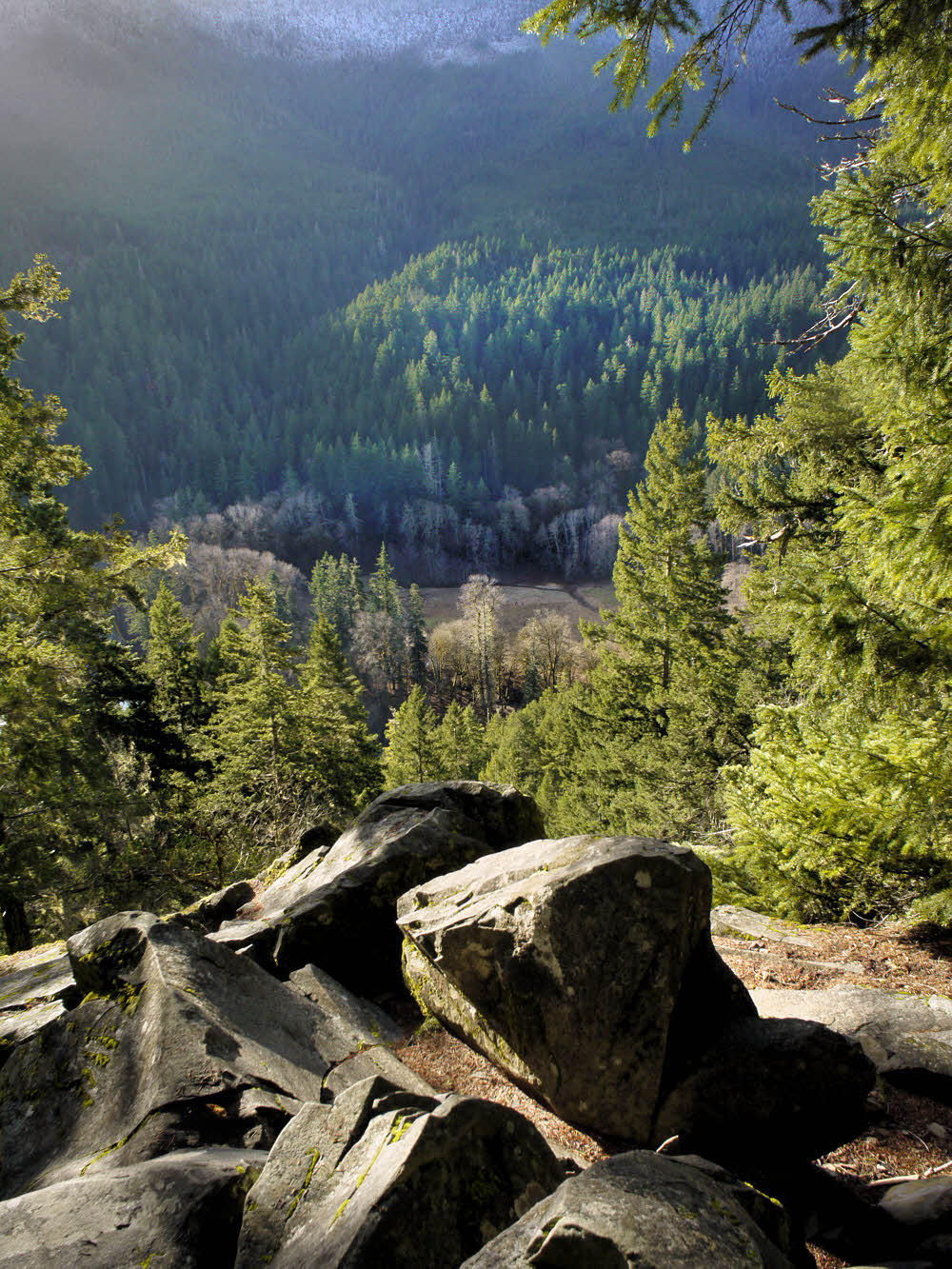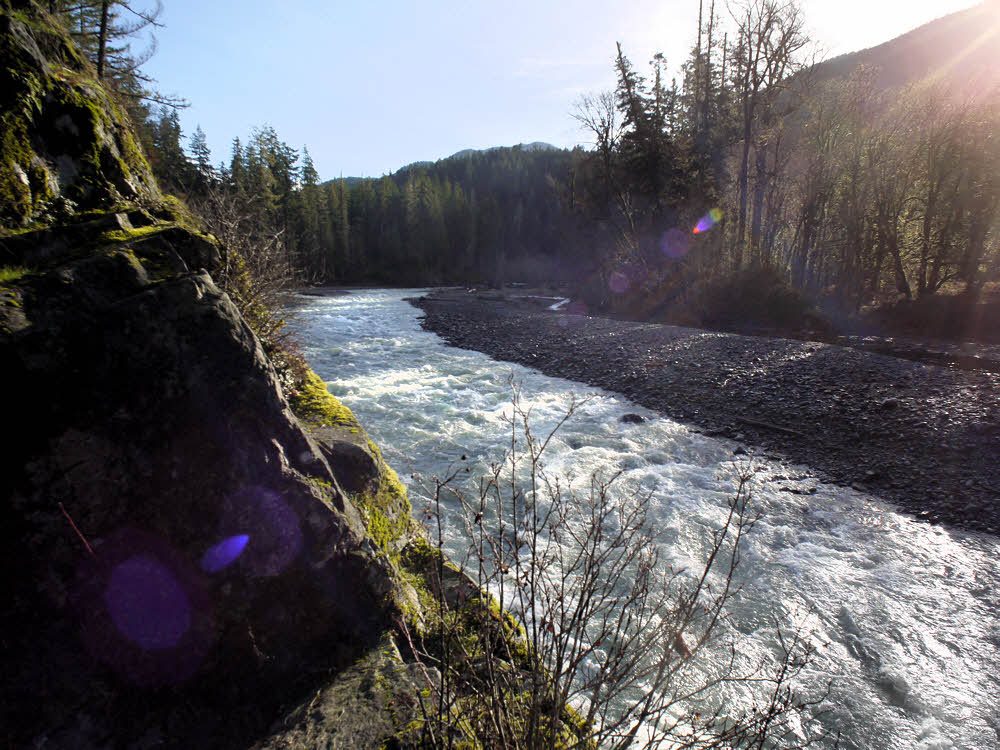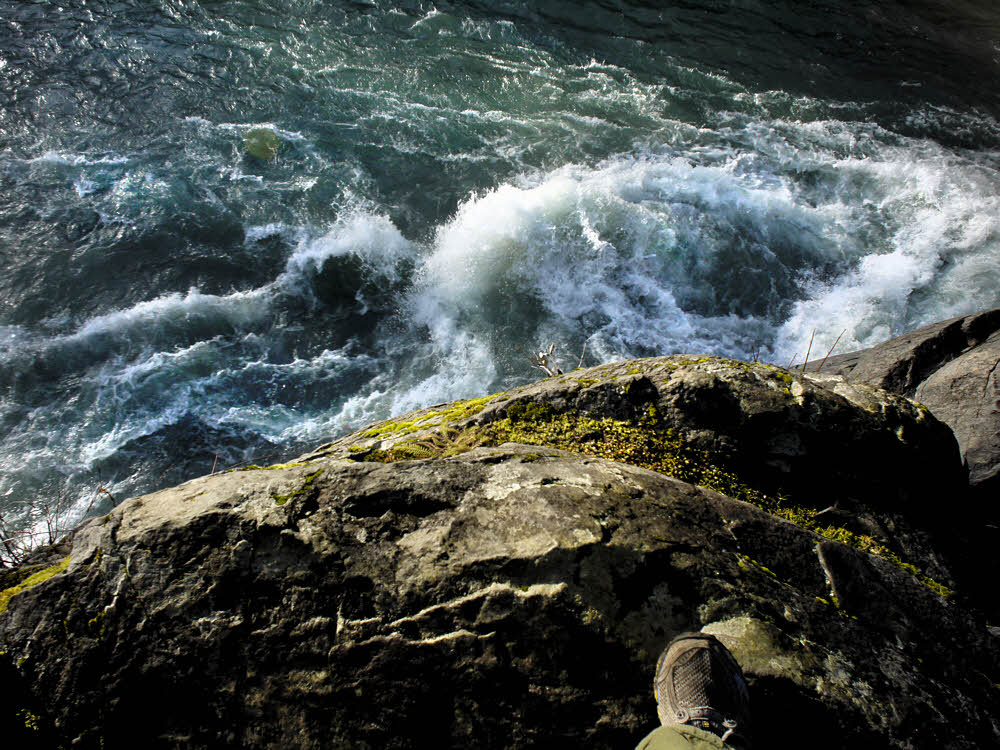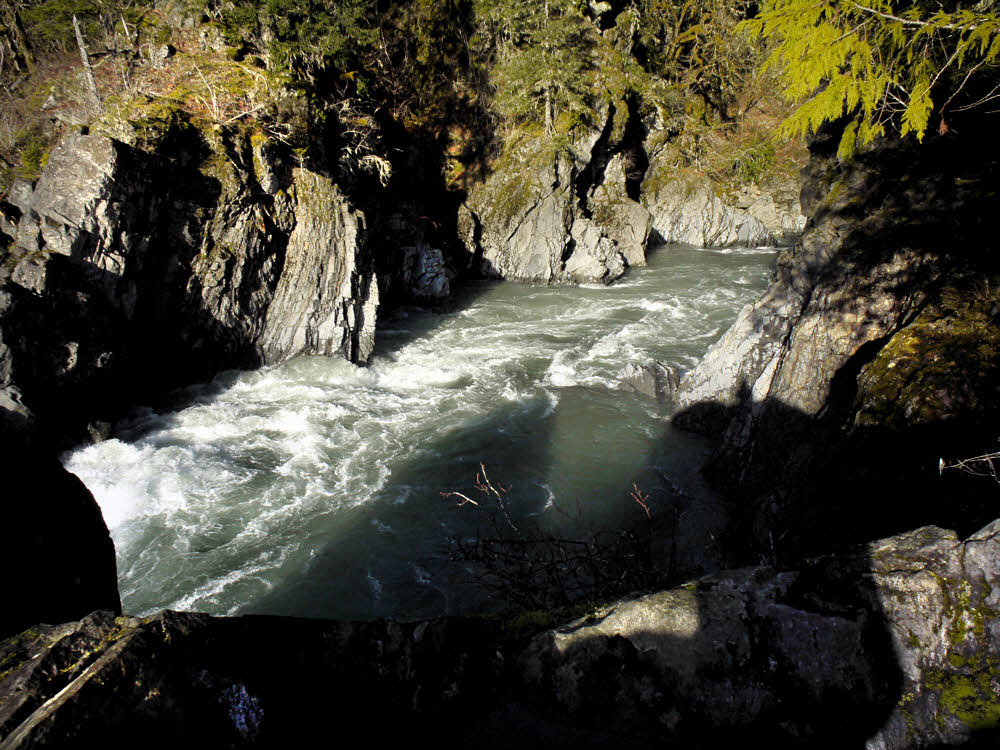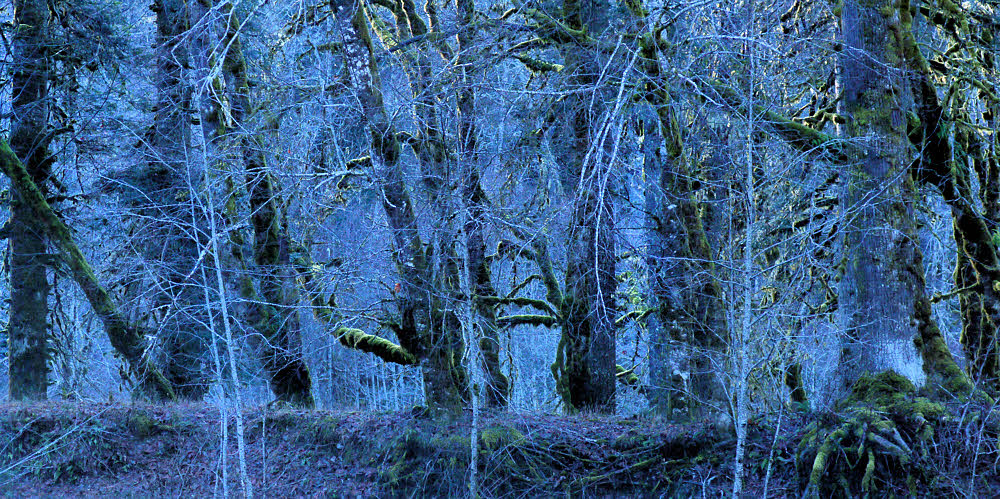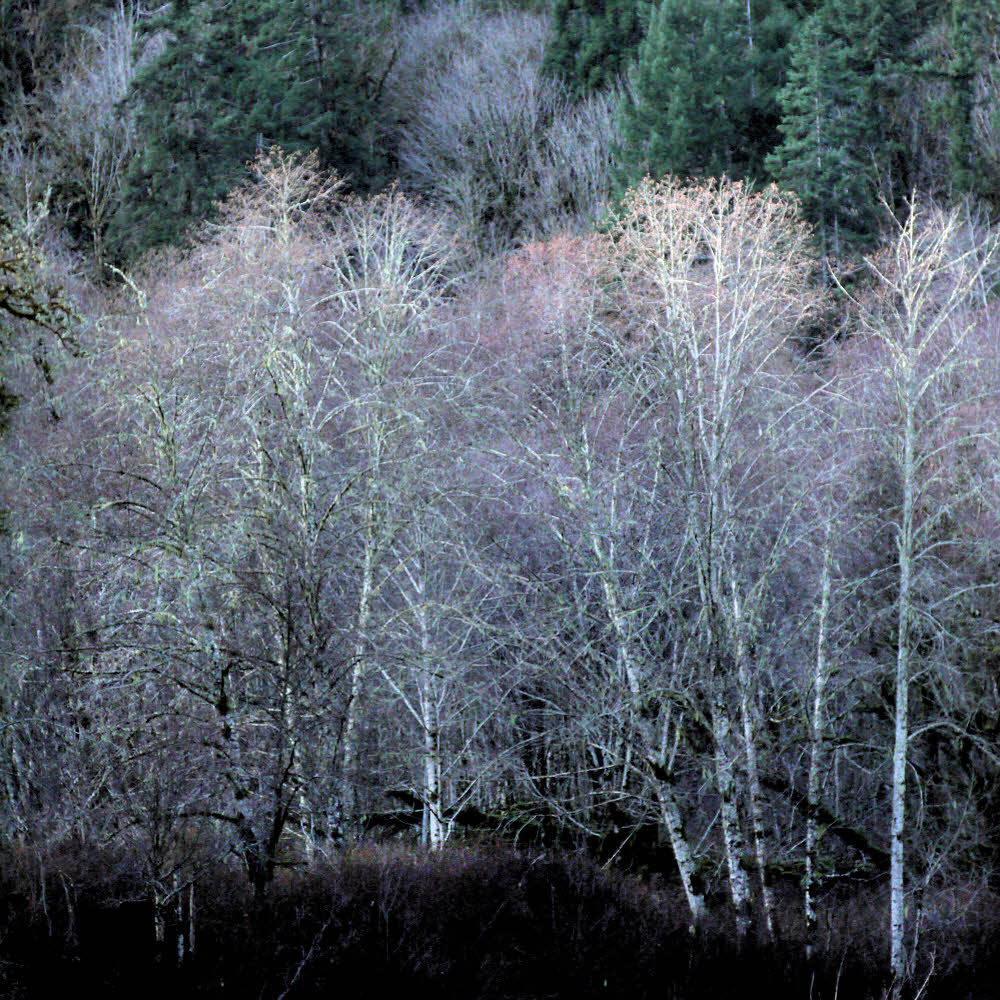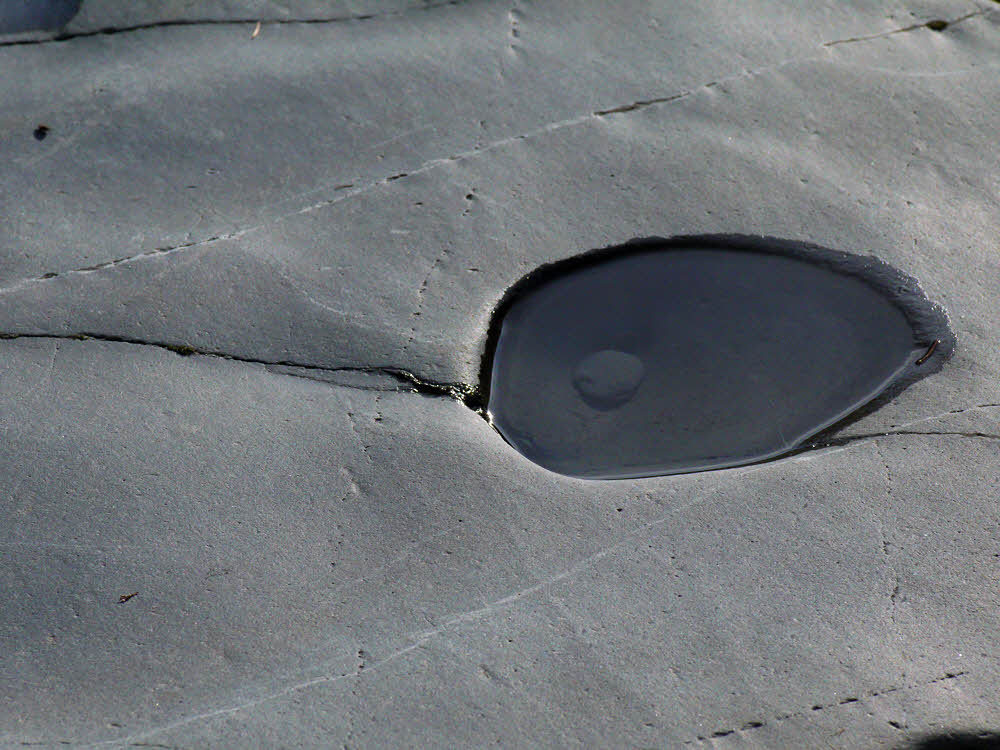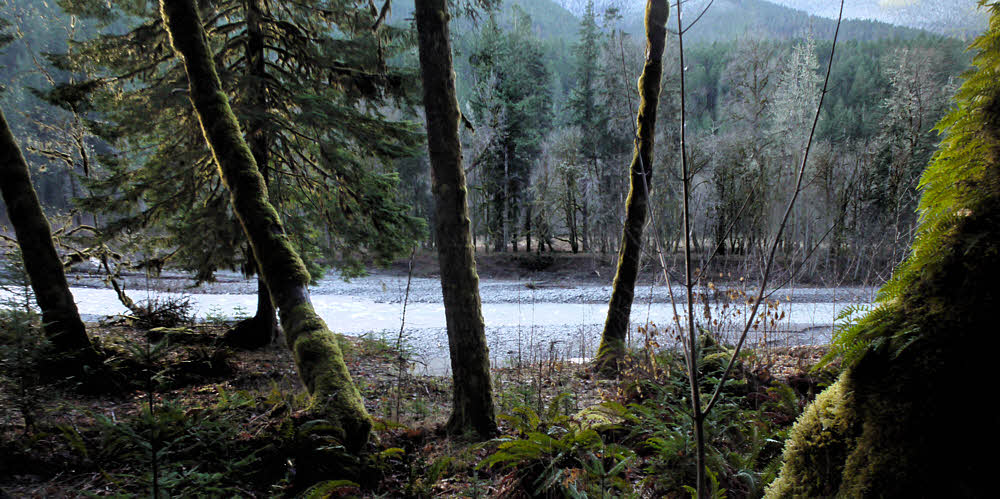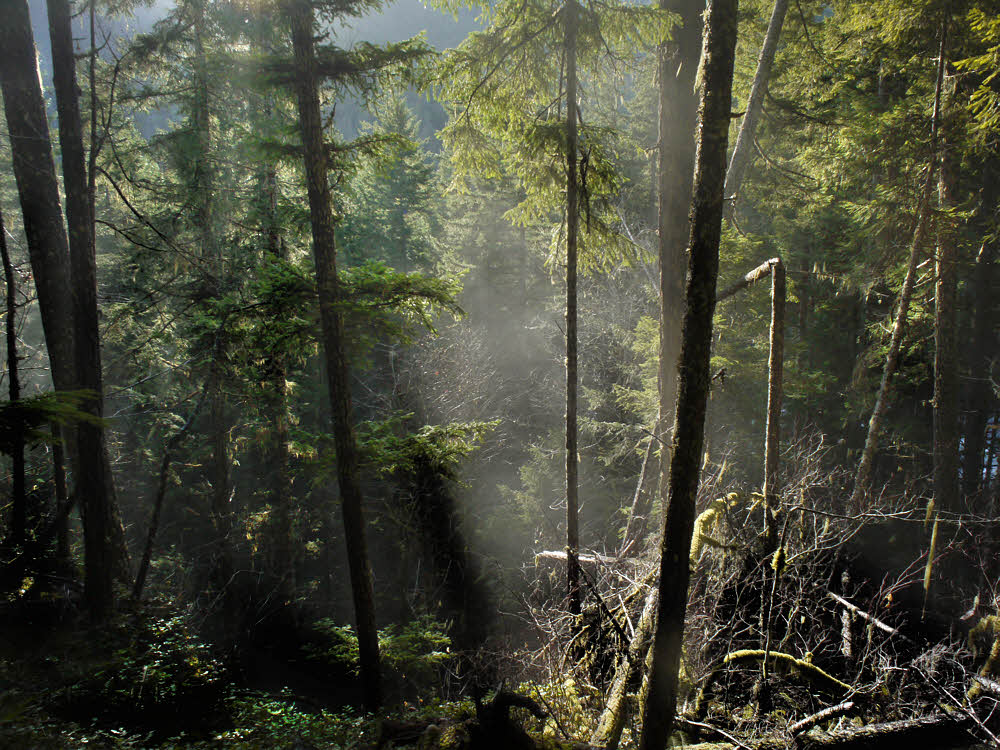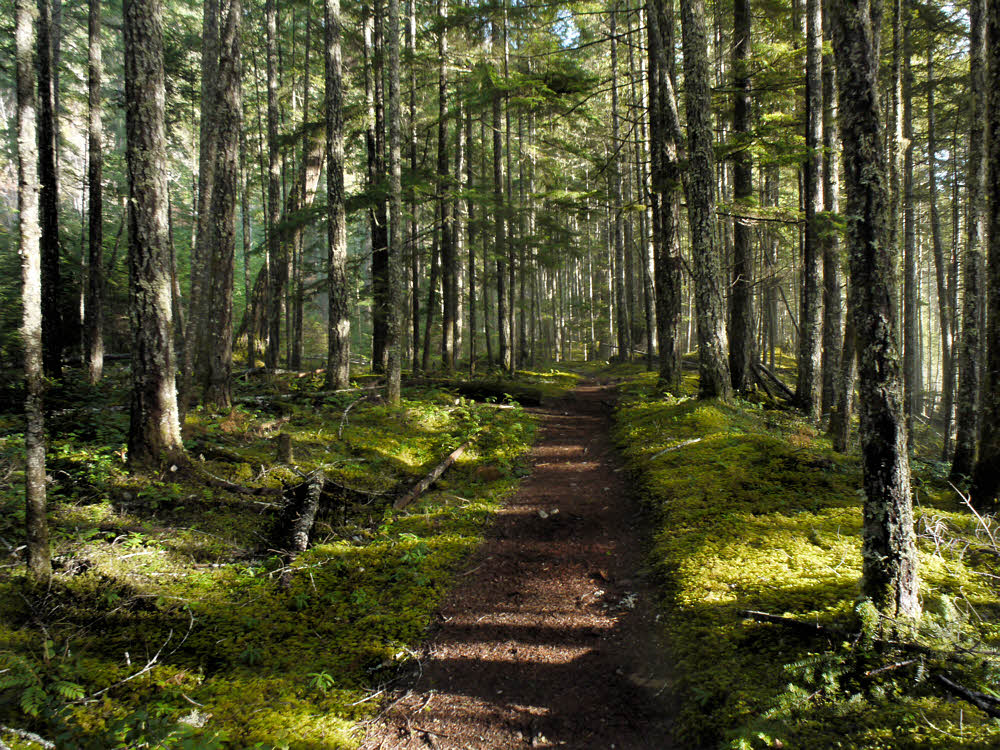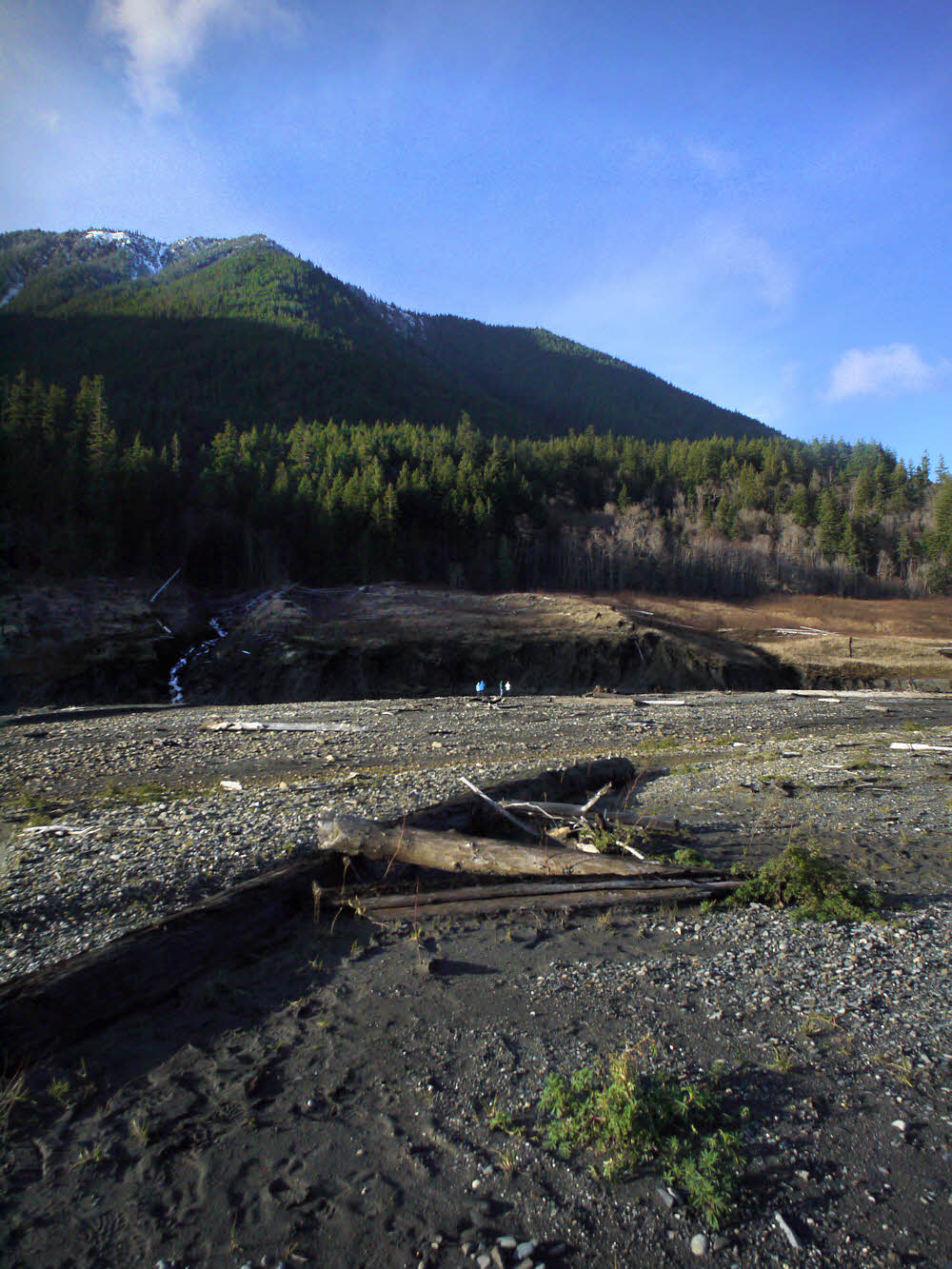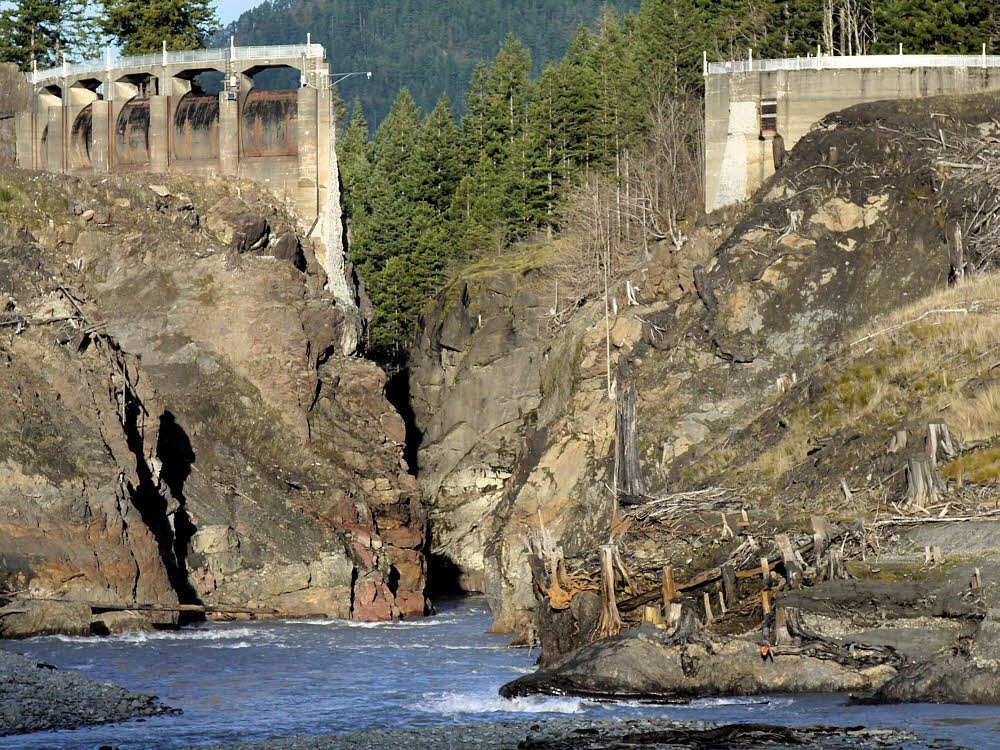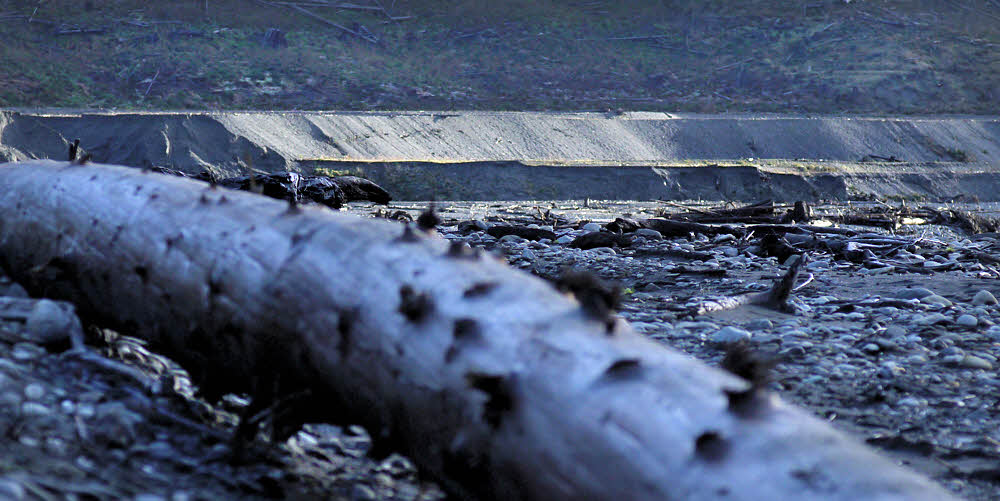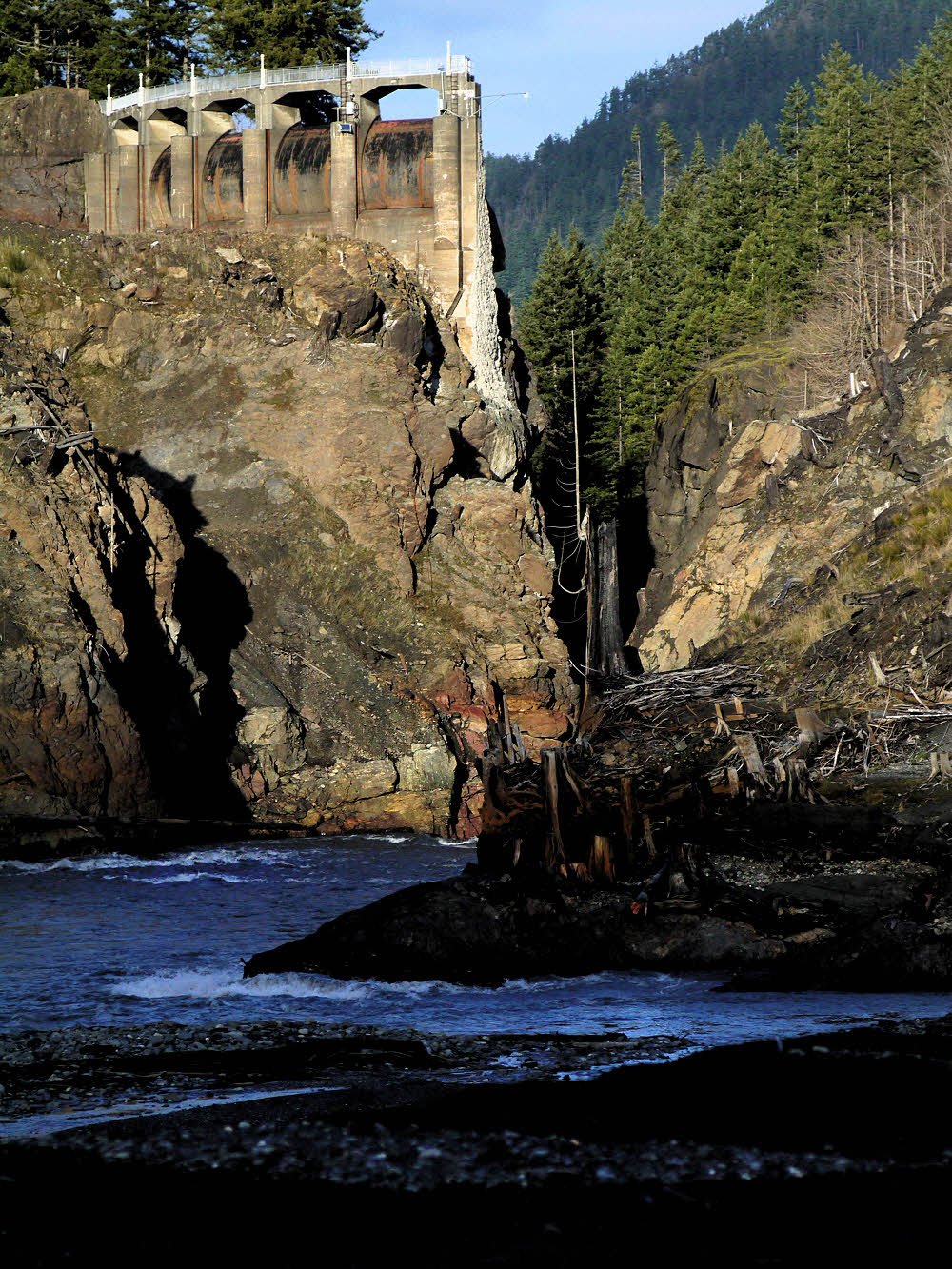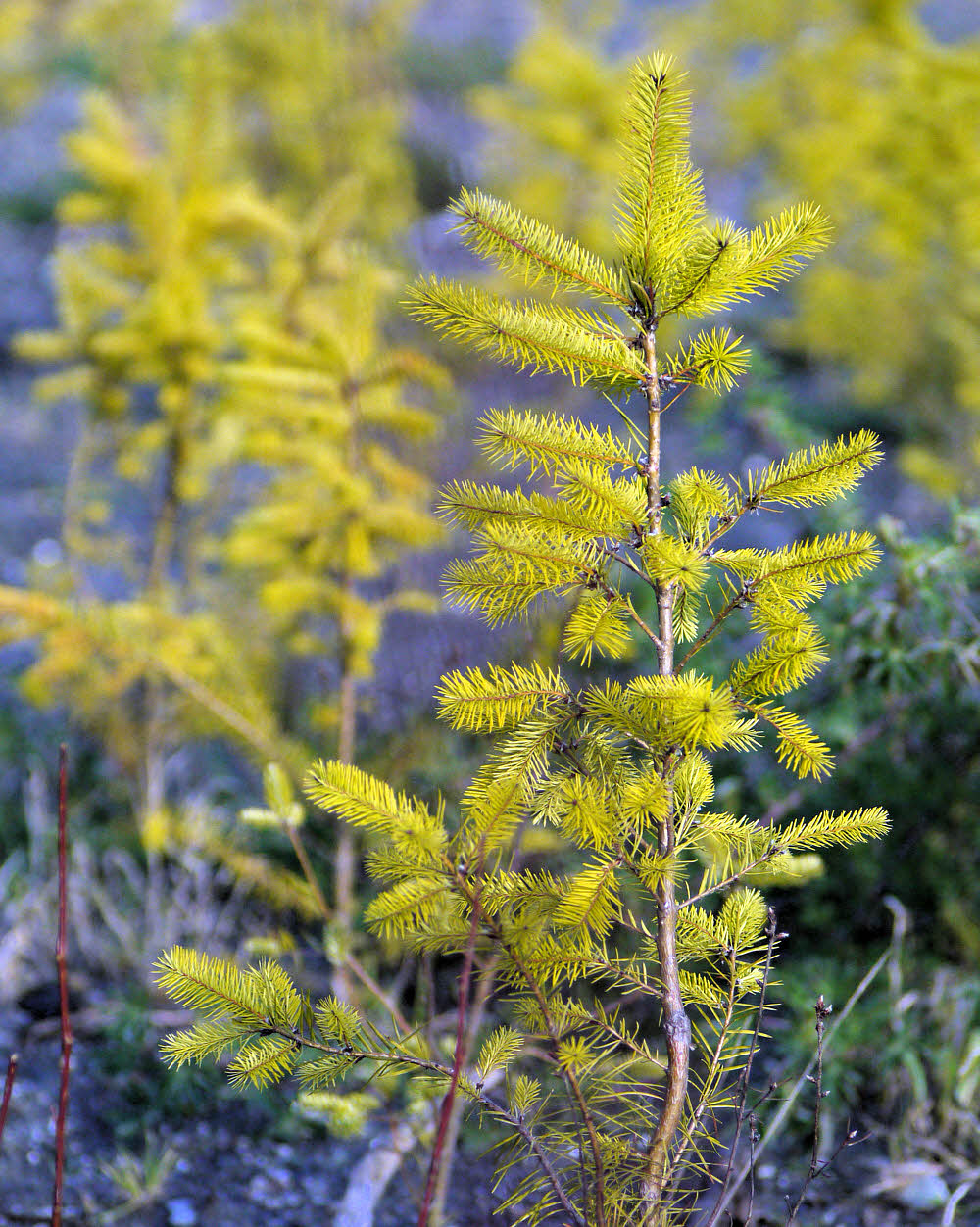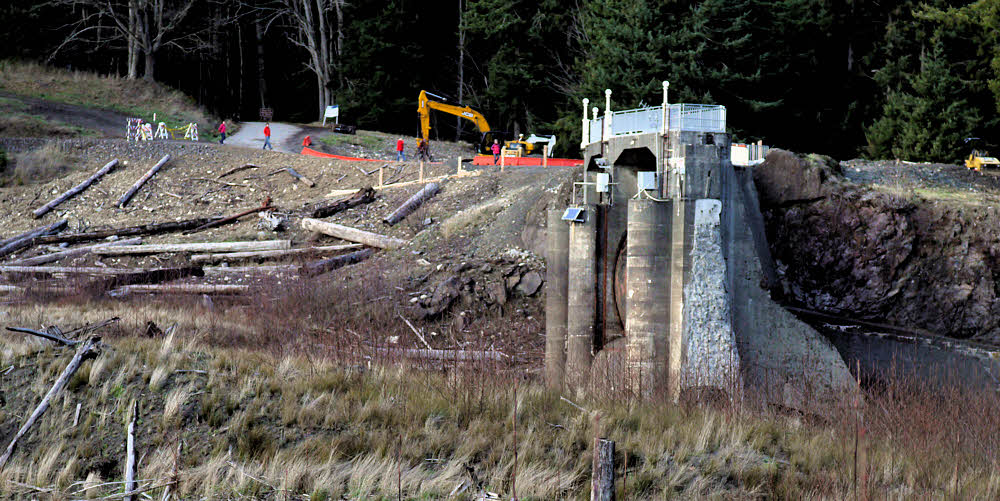Getting down to the dirt.
Hills over rain forest way. I didn't go there.
After stomping around on top of the dam I drove south to Whiskey Bend, and hiked on from there.
Along the trail south.
The trail was nice, but the day was cold, though sunny enough.
Past Whiskey Bend, at the so-called overlook.
At the overlook, I looked over. Nice place but there really isn't much to see.
Goblin's Gate, where the Elwha takes a turn to the right.
Then, at Goblin's Gate, we see some drama. Here's where the river makes a tight right turn through a pair of stone teeth.
Going full bore.
A peek upstream shows how full the river really was — lots of rain in the preceding days, all headed toward the ocean.
River thrashing the rocks.
Just a few feet under the overlook the river was doing its best to drag the rest of the world down into its drama. But the rocks are solid.
Just past the Gate.
Just past Goblin's Gate the river settles down a bit. I've always been tempted not to jump in. I think I'll stay that way.
The far shore.
And then, while shooting the far bank, I finally realized that I'd accidentally reset the camera's while balance to tungsten, or indoor lighting. But the effect is kind of fun anyway.
Winter alders.
Meanwhile, downstream, the leafless alders were waiting for spring. They still are, but they look nice.
Rock pocket with resident grinder.
A large boulder with a top pocket, with evidence of how the pocket got there.
Beach rocks.
Everyone takes a photo of beach cobbles. Me too. Why break a tradition?
Shore to shore.
Some things are hard to photograph. Forests. Rivers. Forests and rivers in winter. It was nicer in person. True!
Forest floor.
The forest floor is fully clothed. Leaves and moss and leaves and twigs and moss and stuff.
Trailside slope.
There was a bit of fog, which made itself evident toward late afternoon when a few stray sunbeams poked through.
Quiet trail.
The trail is nice though — not many people out on it Xmas Day, though they did seem to be coming in as I was leaving.
Looks warm and sunny. Not warm.
Up higher the sun was still bright, though down in the bottom of the valley things were beginning to get dark.
Near sundown.
And back up near the dam again, I took the trail upstream. It leads to the river bottom, which used to be roughly 200 feet (61 m) under water.
Meanwhile, back near the dam...
There were about 10 or 15 others out there, all of us gawking.
Showing the gap.
There is still lots and lots of silt, clay, sand, and gravel waiting to work its way downstream.
Free to wander.
Overall, though, it's a pleasant place to walk. Where the access trail meets the former reservoir, it's a little awkward to make the transition due to a couple of small streams and mud.
More thrashing — the river was full-up.
Once you get out on the bottom though, it's easy to wander wherever you want to go. And the river is impressive.
Finally — a good view of the dam.
It's surprisingly easy to get almost all the way up to the dam. Anyway, close enough to get a great view of all 205 feet that aren't there any more.
Slightly upstream.
For the second time, since I stayed long enough, I saw the last rays of the sun illuminating the scattered logs and crumbling, sliding banks.
Second sunset.
The place does have a sort of quiet beauty, for those of us who like noodling around water. I always like looking under rocks for friends.
While the dam gets the last shot of sun for the day.
I guess they're leaving the western half of the dam, where the spillway is. I heard last night that the western side will be open within a month or so, so there must not be any more work planned, which means that this stuff will stay as-is.
One of the young trees in the valley floor.
Some trees were planted, some volunteered. I don't know which is which, but there were lots of these little guys out there.
West bank.
And a few yahoos ignoring the warning signs and goofing around the construction equipment in the area that's still closed.
More:
Previous post: Dam-B-GoneAmerican Rivers' DamNation Film Guide
Return of the River A film about the largest dam removal project in the history of the united states, and the extraordinary effort to restore an eco-system and set a river free.


